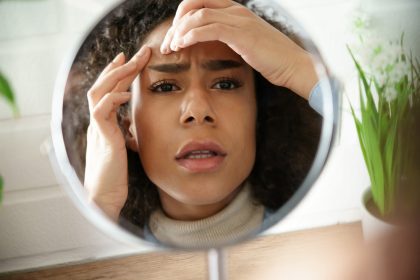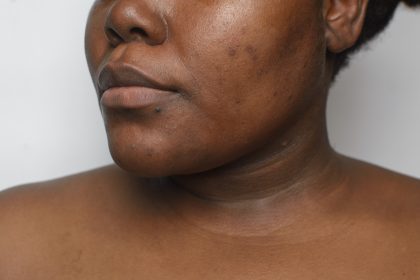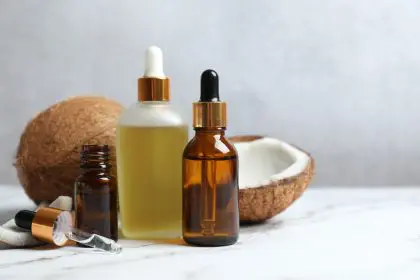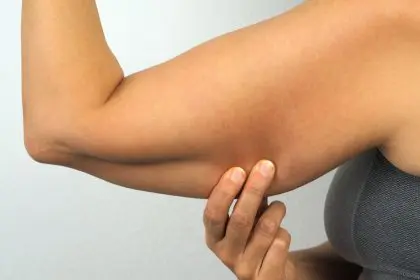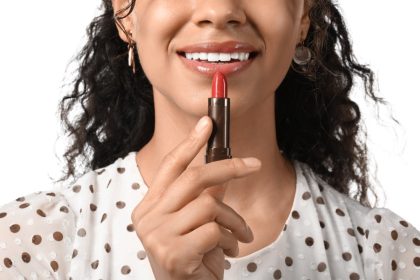The mirror doesn’t lie, and neither does that ponytail that seems to stay the same length month after month. If you’ve been wondering why your once-lustrous locks have seemingly hit the pause button on growth, you’re not alone in this frustrating beauty dilemma.
Hair growth stagnation affects millions of people worldwide, yet the underlying causes often remain mysterious to those experiencing it. What many don’t realize is that healthy hair growth depends on a delicate balance of internal and external factors working in perfect harmony.
The average person’s hair grows approximately half an inch per month, but when this natural process slows down or stops entirely, it can signal deeper issues that extend far beyond simple genetics. Understanding these hidden culprits can be the key to unlocking your hair’s full potential once again.
1. Hormonal havoc wreaking silent destruction
Hormonal fluctuations represent one of the most significant yet overlooked factors in hair growth disruption. The endocrine system plays a crucial role in regulating the hair growth cycle, and even minor imbalances can create dramatic changes in how your hair behaves.
Thyroid dysfunction, particularly hypothyroidism, can slow hair growth to a crawl while simultaneously making existing strands brittle and prone to breakage. The thyroid gland produces hormones that directly influence hair follicle function, and when production decreases, follicles enter a prolonged resting phase.
Androgens, including dihydrotestosterone (DHT), can bind to hair follicles and gradually shrink them over time. This process, known as miniaturization, causes hair to become progressively thinner and shorter with each growth cycle until follicles eventually stop producing visible hair altogether.
Women experiencing perimenopause or menopause often notice significant changes in their hair’s growth patterns due to declining estrogen levels. Estrogen helps hair stay in the active growth phase longer, so when levels drop, the growth phase shortens considerably.
Insulin resistance and elevated cortisol levels can also interfere with normal hair growth patterns by disrupting the delicate balance of nutrients reaching hair follicles through the bloodstream.
2. Nutritional deficiencies starving your follicles
Your hair follicles are among the most metabolically active structures in your body, requiring a constant supply of specific nutrients to function optimally. When these essential building blocks become scarce, hair growth often becomes the first casualty.
Iron deficiency represents one of the most common nutritional causes of stunted hair growth. Hair follicles require adequate iron stores to produce healthy keratin, the protein that forms the structure of each strand. Without sufficient iron, follicles cannot maintain their normal production schedule.
Protein deficiency can halt hair growth entirely since hair is composed almost entirely of keratin protein. When dietary protein intake becomes inadequate, the body prioritizes protein for essential organ functions, leaving hair follicles without the raw materials they need.
B-complex vitamins, particularly biotin, folate, and B12, play crucial roles in cell division and DNA synthesis within hair follicles. Deficiencies in these vitamins can slow the rate at which new hair cells are produced.
Zinc deficiency affects protein synthesis and can cause hair to become weak and brittle while simultaneously slowing growth rates. This mineral is essential for proper hair follicle function and keratin production.
Essential fatty acid deficiencies can compromise scalp health and reduce the quality of sebum production, creating an environment less conducive to optimal hair growth.
3. Chronic stress triggering growth phase disruption
Stress doesn’t just affect your mental well-being – it can literally rewire your hair growth cycle in ways that persist long after stressful events have passed. The physiological response to chronic stress creates a cascade of hormonal and metabolic changes that directly impact hair follicle function.
When stress levels remain elevated for extended periods, the body produces excess cortisol, which can push hair follicles into the resting phase prematurely. This shift can cause hair to stop growing for months at a time while existing strands gradually shed.
Chronic stress also reduces blood circulation to the scalp, limiting the delivery of oxygen and nutrients that hair follicles require for optimal function. Poor circulation can create a hostile environment for hair growth while promoting inflammation around follicles.
The stress response can interfere with nutrient absorption in the digestive system, creating secondary nutritional deficiencies that further compromise hair health. Even with adequate dietary intake, chronic stress can prevent proper utilization of key nutrients.
Sleep disruption, often associated with chronic stress, interferes with growth hormone production and cellular repair processes that occur primarily during deep sleep phases. Hair follicles rely on these nighttime repair mechanisms to maintain healthy growth patterns.
4. Scalp conditions creating hostile growth environments
The health of your scalp directly determines whether your hair follicles can function at their full potential. Various scalp conditions can create inflammatory environments that interfere with normal hair growth processes.
Seborrheic dermatitis and other forms of scalp inflammation can disrupt the hair growth cycle by creating chronic irritation around follicles. Inflamed follicles often produce weaker, thinner hair while simultaneously shortening the active growth phase.
Fungal infections of the scalp can damage hair follicles and create scarring that permanently impairs growth in affected areas. These infections often go undiagnosed for extended periods, allowing damage to accumulate over time.
Excessive sebum production can clog hair follicles and create an environment that promotes bacterial overgrowth. This buildup can interfere with normal hair emergence and weaken the connection between growing hairs and their follicles.
Product buildup from styling products, dry shampoos, and even regular shampoos can create a barrier on the scalp that prevents proper follicle function. This accumulation can block pores and interfere with the natural shedding and regrowth cycle.
Chemical damage from hair treatments, including relaxers, perms, and frequent coloring, can cause inflammation and scarring that permanently alters hair growth patterns in treated areas.
5. Medications and treatments with hidden side effects
Many commonly prescribed medications can interfere with hair growth through various mechanisms, often without patients or healthcare providers making the connection between treatment and hair changes.
Blood thinners can affect the hair growth cycle by altering nutrient delivery to follicles and changing the way hair follicles respond to growth signals. These effects often develop gradually and may not become apparent for several months after starting treatment.
Antidepressants, particularly selective serotonin reuptake inhibitors, can disrupt hormonal balance and interfere with the natural hair growth cycle. The effects on hair growth often persist even after discontinuing these medications.
Beta-blockers and other cardiovascular medications can reduce blood circulation to the scalp, limiting nutrient delivery to hair follicles and slowing growth rates throughout the scalp.
Chemotherapy and radiation treatments can damage rapidly dividing cells, including those in hair follicles, leading to complete growth cessation or permanent changes in hair texture and growth patterns.
Birth control pills and hormone replacement therapies can alter the balance of hormones that regulate hair growth, sometimes causing hair to enter the resting phase prematurely or remain there longer than normal.
6. Age-related changes in follicle function
The natural aging process brings inevitable changes to hair follicle function, but understanding these changes can help you adapt your hair care approach to work with your body’s evolving needs.
Follicle sensitivity to hormones increases with age, making hair more susceptible to the effects of androgens and other growth-inhibiting hormones. This increased sensitivity can cause gradual miniaturization of follicles over time.
Blood circulation to the scalp naturally decreases with age, reducing the delivery of nutrients and oxygen that follicles need for optimal function. This reduced circulation can slow growth rates and affect hair quality.
The hair growth cycle naturally lengthens with age, meaning each phase takes longer to complete. The result is slower overall growth rates and longer periods between shedding and regrowth.
Cellular regeneration processes slow down throughout the body with age, including the rapid cell division required for hair growth. This slowdown affects both the rate of growth and the quality of newly produced hair.
Hormone production naturally declines with age, particularly growth hormones and sex hormones that play important roles in maintaining healthy hair growth patterns.
7. Environmental factors creating invisible damage
Your daily environment exposes your hair and scalp to numerous factors that can gradually compromise growth potential over time, often without obvious immediate effects.
UV radiation from sun exposure can damage hair follicles and the surrounding scalp tissue, creating inflammation that interferes with normal growth processes. This damage accumulates over years of exposure and can permanently alter growth patterns.
Air pollution exposes the scalp to free radicals and inflammatory compounds that can damage follicles and disrupt cellular processes essential for hair growth. Urban environments present particularly high levels of these damaging compounds.
Hard water containing high levels of minerals can create buildup on the scalp and hair that interferes with follicle function and makes hair more prone to breakage. This buildup can also affect the pH balance of the scalp environment.
Climate extremes, including very dry or humid conditions, can stress hair follicles and affect the scalp’s natural moisture balance. These environmental stressors can push follicles into defensive modes that prioritize survival over growth.
Chemical exposure from household products, workplace environments, and personal care items can gradually accumulate on the scalp and interfere with follicle function through various toxic mechanisms.
Understanding these seven key factors that can halt hair growth provides the foundation for developing an effective strategy to restore your hair’s natural growth potential and achieve the healthy, growing hair you desire.




